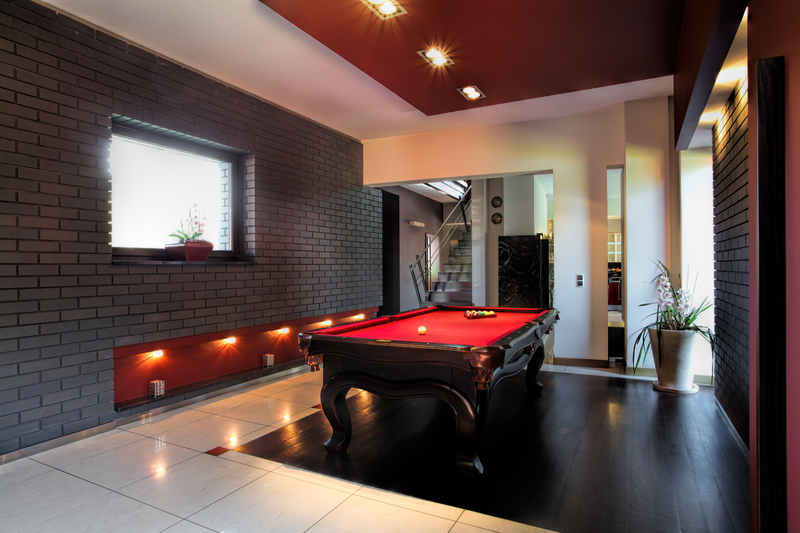The Ins and Outs of Piano Moving and Why It's Not a One-Person Job
Piano moving is much more than just shifting heavy furniture from one location to another. Behind every successful piano move is a team of skilled professionals, the right tools, and a wealth of knowledge about this delicate process. It's understandable to think that you can save a few dollars by moving your own piano - after all, how hard can it be? In reality, moving a piano is a specialized task with a range of challenges, meaning it's not something that should ever be attempted by a single person or even by individuals lacking proper experience.
This comprehensive guide will delve into the ins and outs of piano moving, exploring the risks, the techniques, the preparation required, and why professional piano movers are worth every penny. If you care about your instrument and personal safety, read on to discover why relocating a piano is a serious undertaking that's best left to the experts.
Understanding the Complexity of Piano Moving
At first glance, moving a piano might seem as simple as recruiting a few strong friends and renting a moving van. However, pianos are unique instruments that combine exceptional weight, intricate internal mechanics, and often significant sentimental or financial value. There's far more to piano moving than meets the eye.
Different Types of Pianos and Their Specific Challenges
The different types of pianos present unique challenges when it comes time to move:
- Upright Pianos: These can weigh between 300 and 600 pounds. Their tall, narrow frame makes them deceptively heavy and difficult to maneuver, particularly through hallways and doorways.
- Baby Grand and Grand Pianos: Weighing up to 1,200 pounds or more, grand pianos are not just heavy but also wide and awkwardly shaped. Their legs and pedals are fragile, and their inner mechanisms are more exposed to risk during a move.
What Makes Piano Moving So Difficult?
There are several factors that make piano relocation much tougher than moving almost any other household item:
- Sheer Weight: Even the smallest upright pianos are extremely heavy. This weight isn't always evenly distributed, further complicating matters.
- Awkward Dimensions: Pianos are often taller, wider, or longer than regular furniture, making tight turns, stairs, and narrow corridors challenging without proper technique.
- Delicate Components: The inner workings of a piano are incredibly sensitive. Bumps, drops, or incorrect handling can destroy tuning or--worse--break hammers, strings, or the soundboard.
- Risk of Injury: Lifting and balancing a piano incorrectly can easily lead to severe back injuries, smashed fingers, or worse.

Why Piano Moving is Not a One-Person Job
Piano relocation should never be a solo effort. Let's explore several reasons why attempting to move a piano by yourself is extremely risky--for both people and the instrument:
1. Weight Distribution and Coordination
Pianos require the synchronized efforts of multiple movers to:
- Maintain balance during lifting and carrying
- Navigate sharp turns, stairs, and uneven surfaces without tipping the piano
- Ensure the instrument is not dropped during transition phases (such as moving onto a dolly, up a ramp, or into a vehicle)
The average upright piano is simply too heavy and unwieldy for one person to lift, let alone carry safely. When it comes to horizontal grand pianos, even teams of four or more experienced movers may be required to protect both the piano and the property.
2. The Danger of Injury
Attempting piano moving alone is a recipe for disaster. Heavy lifting without proper form and the added instability of a cumbersome instrument greatly increases the risk of:
- Back strains and herniated disks
- Smashed hands, fingers, or feet
- Cuts, bruises, and muscle tears
- Possible bone fractures if the piano tips or drops
The risk of personal injury skyrockets when attempting something as arduous as moving a piano solo.
3. Risk of Damage to the Piano
Pianos are precision instruments made with thousands of small, delicate parts and a beautiful finish. One wrong move can:
- Knock the piano out of tune
- Crack the soundboard or damage the casing
- Bend or break keys, legs, pedals, or strings
These types of damage can lead to expensive repairs or even render the piano unplayable.
4. The Potential for Property Damage
Attempting to maneuver a piano through a standard home means negotiating door frames, floors, stairs, and sometimes elevators. With so many obstacles, there's a very real risk of:
- Gouging floors and scraping walls
- Chipping paintwork or breaking banisters
- Damaging thresholds, carpets, or tile
In short, one-person piano moving is a bad idea all around: it's dangerous, risky, and far more likely to end in disaster than success.
How Professional Piano Movers Make a Difference
When you hire a team of experienced piano movers, you're not just paying for muscle. You're investing in their specialized skills, training, and equipment. Here's what you can expect from the professionals.
Specialized Equipment and Tools
- Piano Dollies and Skid Boards: These sturdy platforms help bear the weight and let movers roll the piano smoothly across floors, minimizing manual lifting and reducing risk.
- Furniture Straps and Harnesses: Secure the piano to dollies and provide additional leverage while lifting or pulling, making movement safer and more controlled.
- Padded Blankets and Wraps: These protect your valuable instrument from nicks, scratches, and impact damage during the move.
- Ramps and Lifts: Allow for smooth loading into and out of moving trucks, especially crucial for steep entryways and steps.
Expertise and Experience
Training and years on the job equip professional piano movers to:
- Understand the balance points and fragile areas on every make and model of piano
- Devise the safest and most efficient route for relocation, from your living room to the final destination
- Use teamwork and communication to execute complex moves safely
- Disassemble and reassemble upright and grand pianos when necessary
Insurance and Peace of Mind
Even the most careful movers have accidents. Reputable piano moving services are fully insured, meaning that in the unlikely event of damage or injury, you are protected from massive financial loss. For many piano owners, this peace of mind alone is worth it.
Step-by-Step: The Professional Piano Moving Process
Let's walk through how the pros handle the relocation of a piano from start to finish:
1. Preparation and Planning
- Survey the property and assess the best exit and entry points
- Measure doorways, stairwells, and hallways to ensure the piano will fit
- Create a step-by-step strategy for navigating obstacles
- Schedule team members based on the size and weight of the piano
2. Protection and Wrapping
- Cover the piano with padded blankets and secure them with tape or straps
- Detach removable parts (music stands, legs, pedal lyre for grand pianos) and wrap them separately
- Protect floors with moving blankets or skid plates
3. Lifting and Moving
- Use dollies and ramps for flat surfaces or specialized equipment for stairs
- Utilize proper lifting techniques--always as a coordinated team effort
- Maintain communication between movers at all times
4. Loading and Securing for Transport
- Use a ramp or lift for loading into a truck
- Secure the piano to the truck with straps to prevent movement during transit
- Avoid placing heavy or loose objects on top of the piano
5. Delivery and Reassembly
- Reverse the process at the new destination--careful unloading, navigating obstacles, and reinstalling any removed parts
- Ensure the piano is placed in a suitable location away from direct sunlight, heat, or moisture
- Advise owners to allow the piano to acclimate to the new environment before tuning
Common Mistakes Made During DIY Piano Moving
If you're still considering moving a piano yourself (or with untrained help), you should be aware of the following frequent missteps:
- Underestimating Weight: Most people simply don't realize how heavy--and awkward--a piano is until they try to move one.
- Using Inadequate Equipment: Standard moving straps and dollies are seldom strong enough for the job, leading to dangerous accidents.
- Improper Lifting Techniques: Lifting "with the back" instead of the legs, or trying to carry too much at once, is a primary cause of injury.
- Inadequate Protection: Skipping on padding leads to scratches, chips, and finish damage.
- Failure to Disassemble: Not removing parts like legs and pedals from a grand piano can result in catastrophic breaks.
- Lack of Support: Trying to "muscle through" doorways or stairs without enough people leads to dropped instruments and damaged property.
How to Prepare for Piano Moving: Tips for Owners
Even if you're leaving the heavy lifting to the professionals, there are steps you can take to make the process smoother and safer:
- Clear the Pathway: Remove any rugs, chairs, or decorations that could be tripping hazards.
- Secure Pets and Children: Keep pets and kids away from both the movers and the moving route.
- Communicate Clearly: Let professionals know about any unusual obstacles--tight stairwells, sharp corners, or fragile flooring.
- Take Photos: Document the condition of your piano before moving day for insurance purposes.
- Prepare the New Location: If possible, have the new space clean, accessible, and ready to receive the instrument.

Frequently Asked Questions About Piano Moving
How much does professional piano moving cost?
The price depends on the type of piano, distance moved, obstacles encountered, and the number of professionals needed. Upright pianos often range between $150-$400 for local moves, while grand pianos can run $500 or more.
Can I keep my piano in tune during a move?
It's almost inevitable that a piano will require retuning after a move due to changes in humidity, vibrations, and physical jostling. Wait at least two weeks after the move before calling a piano tuner.
Is it possible to move a piano upstairs or downstairs?
Yes, but it should only be tackled by professionals with the right equipment and expertise. Attempting this without experience is highly risky.
Is moving a digital piano easier?
Digital pianos are generally lighter and less fragile, but larger stage or console models can still require caution and multiple people to move safely.
Conclusion: Why Your Piano Deserves Professional Care
Moving a piano is a complicated process that should never be a one-person task. Valuable, intricate, and often irreplaceable, a piano deserves care and respect during any move. Whether you have a family heirloom upright or a concert grand, opting for a team of professional piano movers ensures the safety of both your precious instrument and those handling it. With the right preparation, specialized equipment, and expert knowledge, professional movers take the stress--and danger--out of piano relocation, giving you peace of mind every step of the way.
If you're planning a move and want your piano to arrive safe, sound, and ready to play, always remember: never attempt piano moving as a one-person job. Trust the experts and keep your music alive!



